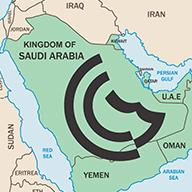G Marking for Low-Voltage Electrical Products: What You Should Know
July 6, 2016

One of the fastest growing emerging economies is the Gulf region, where the Gulf Cooperation Council (GCC,) along with the Republic of Yemen, has created the Gulf Standardization Organization (GSO) to help support and promote regional economic and political policies. As part of their economic growth policy, the GSO has developed, implemented and maintained its own standards and technical regulations for product safety. As a result they created a "Gulf Mark" (G Mark), to signify product conformity to essential requirements for "health, safety and environment."
G marking is similar in design to European Union notified body schemes that require a higher degree of third-party oversight from accredited labs and their notified bodies. After primary focus on select product types, such as toys, the GSO is now turning its attention to some low-voltage electrical products as mandatory G marking items, as of July 1, 2016.
The technical regulations for low-voltage electrical products comprise two lists. Products on List 1 require a self-declaration conformity assessment procedure, while products on List 2 require notified body involvement. List 1 products have yet to be announced; however, it has been indicated that these products will be classified as low risk, allowing self-declaration as a means of proving conformity. List 2 products consist of 13 categories, primarily in the area of home appliance. They are: domestic electrical fans; refrigerators, freezers and other refrigerating/freezing equipment; centrifugal clothes dryers and washing machines, including machines that both wash and dry; food grinders, mixers and juice extractors; toasters; electro-thermic hair-dressing devices and dryers; domestic electric heating devices; microwaves; other ovens, cookers, cooking plates, boiling rings, grillers and/or roasters; electric instantaneous or storage water heaters and immersion heaters; irons; plugs, socket outlets, adaptors, cord extension sets and chargers; and air conditioners. These products require testing, review of the product's technical file and a recommendation to grant certification from a third party.
Given the differences between product types and the mandate that products on List 2 require type certification from a notified body, there may be some confusion as to the role a manufacturer plays in obtaining a G Mark. For any product intended for the GCC marketplace-thus, requiring the G Mark-all manufacturers must ensure the product meets the requirements laid out in the technical regulation BD-1420004-01.
For List 1 products, the manufacturer shall:
Establish a technical documentation file for each model or range of product including a risk analysis/assessment report relating to the products within the series range, third-party test report(s) from a Global Accreditation Center (GAC)- or International Laboratory Accreditation Cooperation (ILAC)-accredited laboratory, or a CB test report and CB test certification through the IECEE system
Provide additional documentation, such as a detailed description of the product with conceptual design and manufacturing drawings, and addresses of the places of manufacture and storage of the product
List the Gulf or IEC standards applied in full or part to the product
Manufacturers must have a system in place to ensure products are being manufactured and assembled in a controlled manner that includes production line testing to confirm product quality and integrity, so as to maintain conformity within the design intent.
The regulations are meant to ensure the manufacturer maintains the proper conformity assessment procedures needed for safe internal product control. Once these elements have been completed and the product has been registered and approved by the GSO, the manufacturer can affix the G Mark, with registration number, on the product and draw up a written declaration of conformity.
For List 2 regulated products, manufacturers must choose a single notified body to examine the product's technical design and verify that it meets the requirements of the applicable Gulf technical regulations. The notified body must also issue an evaluation report with a Gulf type examination certificate and ensure the manufacturer has a production quality system implemented in order to confirm the product is being manufactured in accordance with technical specifications.
In addition to selecting and working with the notified body, the manufacturer must also create a technical documentation file for each model of a product. The documentation must include a risk analysis/assessment report and test reports, among the additional documentation requirements noted for List 1 products, as well as the notified body evaluation report and type examination certificate. Under List 2, the product registration is the responsibility of the notified body.
The technical documentation for both product lists must be drawn up in Arabic. If this isn't possible, documents in English can be submitted after the approval of the Competent National Authorities of the GCC member states. The manufacturer must keep the technical documentation at the national authorities' disposal for 10 years after the product has been placed on the market.
The GCC is harmonizing its technical regulations and conformity assessment procedures among its member states, helping to ensure better economic flow and cooperation in the region. These standards are also aligned with international standards, bringing a more coherent and cohesive environment to global businesses looking to enter the GCC member states. Becoming familiar with the G Mark requirements and aligning with a trusted notified body can make a huge difference in getting certified products to this market quickly and efficiently.
Dean Davidson is a vice president at Intertek. In this role he manages certification programs and works collaboratively with senior leadership to ensure effective and efficient processes and technology are in place to support day-to-day business, as well as key strategic initiatives.
[Main image sourceL Intertek]
About the Author(s)
You May Also Like





